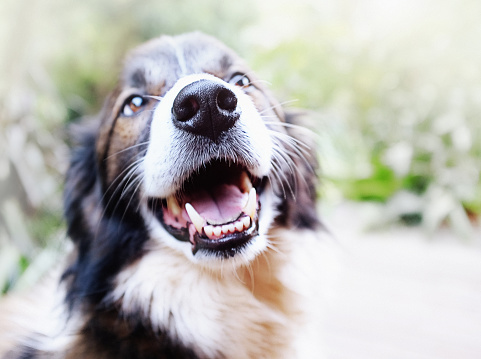Riddle this: what has fur, four legs and can find a bone buried some distance away? The answer: dogs!
Man’s best friend is said to have a sense of smell superior to that of human beings—some scientists have found that dogs’ sense of smell is up to 1,000 times sharper than ours!
While most humans primarily depend on their vision to navigate the world around them, dogs use both sight and smell to assess their surroundings and communicate. Their keen sense of smell helps them act as guide dogs for the blind, detect explosives, find drugs and search for people after earthquakes, avalanches or other disasters.
Studies conducted by the American Urological Association have shown that dogs can even smell prostate cancer! When confronted with several urine samples, some dogs were able to distinguish those that belong to a person with this disease.
Does your dog’s nose have what it takes? Test your dog’s sense of smell with this fun experiment from Bayer’s Making Science Make Sense® portal to encourage your child to use creative thought processes while encouraging independent thinking.
Materials
- A dog
- Small dog treats
- one (1) shoe box
- Shredded newspaper
Procedure:
- Show the treat to your dog. Then close the treat in your fist, hiding it from the dog.
- Put your hands behind your back. Now show both fists, palms up. Say “Look!” and then your dog’s name and then “Look!” again.
- When the correct hand is sniffed, open your fist and let your dog have the treat. Be sure to pet and praise your dog.
- Repeat steps 2 and 3, but this time, show your fists palm down (this makes it harder to smell). What happens?
- Take another treat and put it on top of shredded newspaper in a shoe box. Then say “Look!” and then your pet’s name and then “Look!” again. Did your dog find the treat?
What This Means:
Dogs have a remarkable sense of smell. They often bury bones to save them for later.
This is also why dogs are often used by search and rescue teams. Sniffing a small piece of clothing is often the only clue a well-trained dog needs to follow a scent and locate a lost person.
Did You Know?
- Dogs can smell items buried as far as 40 feet underground.
- Dogs have 300 million olfactory receptors in their noses versus 6 million in human noses.
- Dogs have a special scent-detecting organ, called a vomeronasal, humans don’t have it.
- Dogs can breathe out and breathe in at the same time.
- Dogs smell in 3D, they can smell separately with each nostril.
Want More Like This?
Have some fun this weekend by doing a few easy experiments that tasty as well as fun!
Brigitte L. Maxey is a freelance writer for Our Children Magazine.
Bayer—a founding sponsor of National PTA’s STEM + Families initiative—is a global enterprise with core competencies in the Life Science Fields of healthcare and agriculture.





